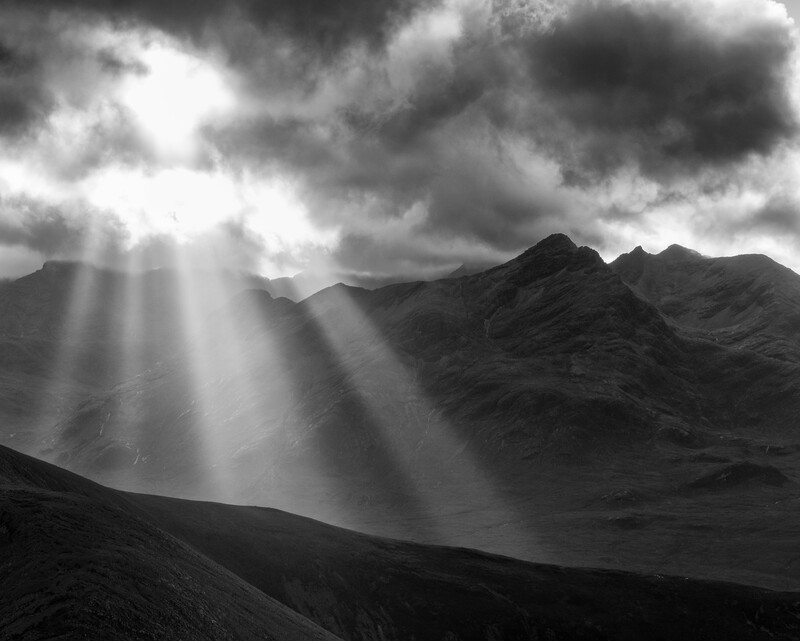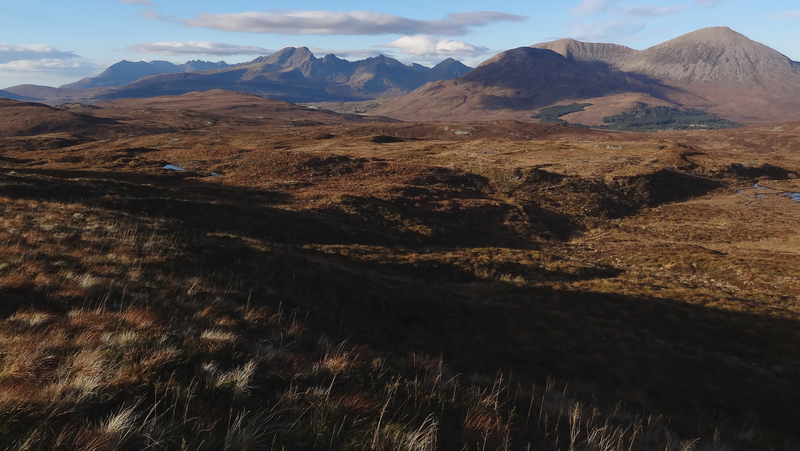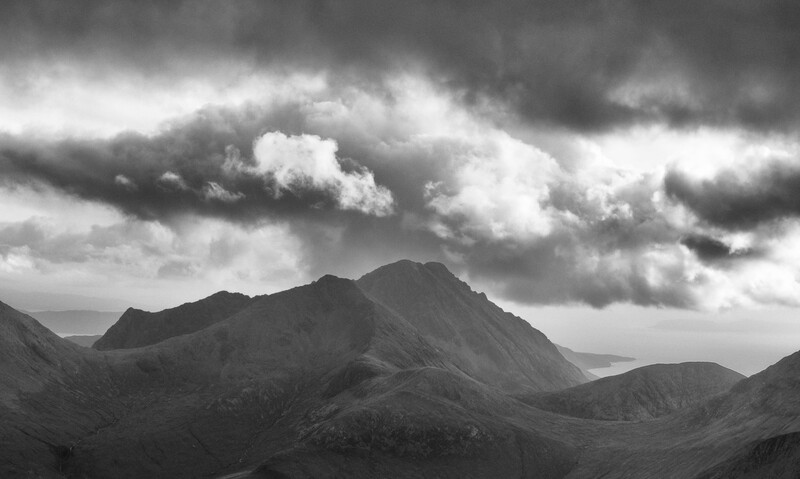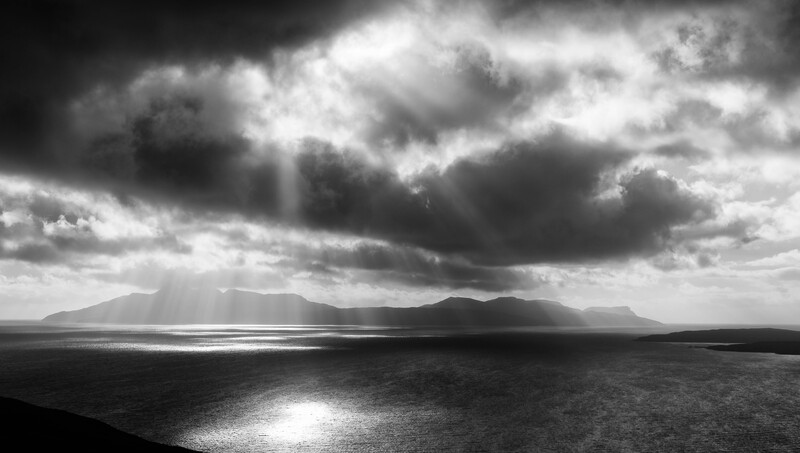On Photography
Sat, Nov 14, 2015
As I’ve been working on my exhibition images for next spring at the John Muir Trust Wild Space centre in Pitlochry, I’ve been thinking a lot about what photographs actually are and why I like black and white so much.
For years I’ve been capturing what I can see in my head with a small camera that has one crucial ability. It lets me lock the exposure and reframe. This means I can get the story just right. By that I mean, I can just about match what I have in mind with what the camera captures for me.
Long gone are the days of the zone system where you’d shift the exposure around for the key tones, with your vision of the final print guiding your choices. Today, I suppose, I do that by locking the exposure using a particular part of the view and using that to create my vision. A darkroom in the camera almost.
And thoughts of what I’ve been doing with the small camera have transferred to the big camera now. I’ve never done much post processing with the small one, especially as the noise reduction can be quite aggressive so any post has to be kept to a mimumum but the exposure tricks I play in the camera give me what I want, there and then. So it’s mostly been some contrast and slight saturation boost and they’ve been good enough for photo features (and exhibitions!).
But with the big camera comes the ability to shoot in raw and use post processing tools like Lightroom and Photoshop to ’tell a story’. With black and white’s timeless quality, the combination can be quite powerful.
The above image of Beinn Sgritheall on a misty morning had me running around and jumping up and down with delight. The view itself was beautiful but I knew straight away what I wanted to do with it. I wanted a black and white ‘batik’ landscape. The harsh light washed out any detail but I could see the possibilities and the lines and form interacted wonderfully with the shifting mists which are actually above the Sound of Sleat.
I’ve been thinking about this kind of minimalist photography and what Michael Freeman calls the ‘visual unconscious’. You look but you don’t see and it’s the photographer’s job to show you what’s there. It’s more suited to street photography where Henri Cartier-Bresson’s ‘decisive moment’ is the perfect moment we all miss, even though it’s right in front of our eyes. But it can also be applied to landscape photography where perhaps the light obscures the vision, physically and emotionally. A dull drab sky may not be that, if you know what to look for.
The other day, out on the Red Cuillin, I was sitting munching my lunch on top of Beinn Dearg Mhòr when I glanced across to Blaven. The sun was slanting in from the right and the sky was bland and even and washed out but I could see something interesting above the hills. I knew it had possibility. I looked and I saw flat lighting, evenly lit mountains and not much of interest photographically. But I could see the possibility of showing the hidden drama of the clouds so I took the picture anyway, with a vision of what it would look like after working on it and sure enough, that big bland cloud I could just see some detail in, came out rather nicely. A visual story hidden in the landscape by rather uninteresting light.
I’ve begun the long journey to understanding my style. That ephemeral nagging that makes me take pictures when others don’t or makes me say ‘pshaw!’ when others fulminate. Of course there’s common ground with other photographers but personal style works at the edges of that shared interest. It’s what make your images ‘different’. It may widen or narrow your market for selling those images but they are your images, with your stamp on them and no-one, not even you, can really say what’s different about them.
I’ve been thinking long and hard about filters. Those neutral density ones that turn angry waves to fuzzy nothings. That turn photographs to ‘fine art’. I’m not sure yet. They’re not my style I don’t think. Instead, I’ve gone back to film, developing my own black and white 35mm after capturing scenes with my (very) old Minolta XG-M and there’s something different about them. Something I can’t quite put my finger on but that I like very much indeed. Of course they’d be even better if I had a real darkroom but even using the big camera to ‘scan’ the negatives and using my ‘digital darkroom’, the images are different.
The above is a 35mm b&w shot of a spot I like to sit at and think, so I called it ‘Thoughtbench’. It’s quite ‘monastic’ really. Lines, form and an idiosyncratic can under the bench. Who left it?
In fact, monastic, sort of sums up where my style is coalescing. I love to sit on high summits and watch the clouds. I love the play of line and form on the horizon, in the clouds, in the sheets of rain, in the way the ravens sit still nearby and do the same. Just looking.
I’ve always preferred music you could call monastic. Apart from actual monastic chanting (which I enjoy), I mean a singer and a guitar, or a piano, or just a voice. My favourite is the female voice and a single piano, no other instruments and I think that’s spilling over into my photographic style and I’m pleased it is. The best things in life are simple.
Black and white photography is the equivalent of accoustic music. It’s the singer and the instrument. It’s the voice with no accompaniment. In every black and white, there’s a space for you to add your own emotions. A space where the colour once was and where there is now only a voice. And you’re free to hear that voice in any way you want. That’s why I love black and white.





